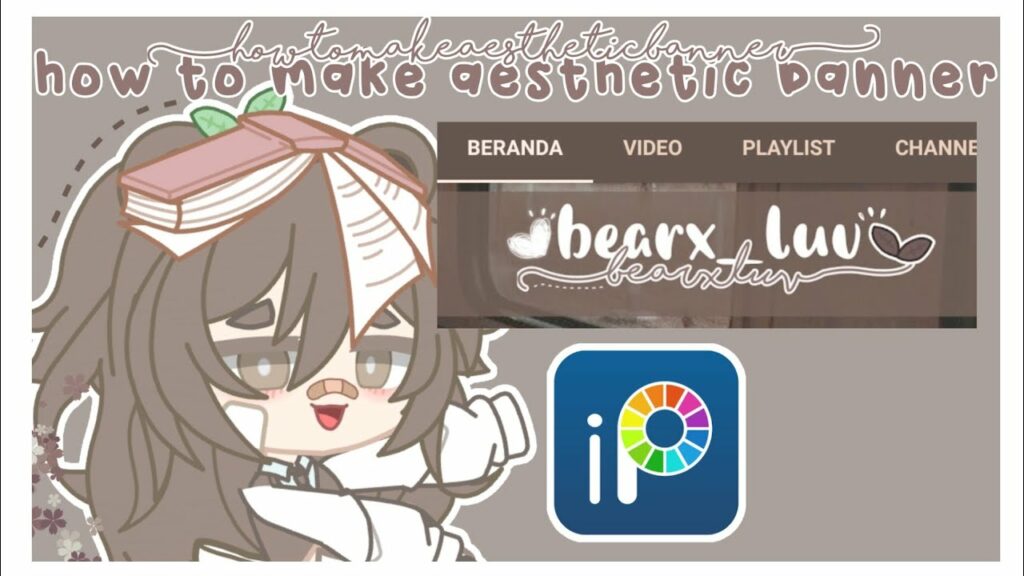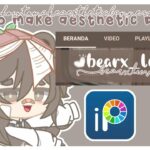
1. Choose the Right Color Palette
💡 One of the most important aspects of web design is choosing the right color palette. The colors you select for your website play a crucial role in setting the tone and atmosphere for your visitors. A well-thought-out color scheme can enhance user experience and make your site more visually appealing.
🖌️ When selecting a color palette, it’s essential to consider the mood and emotion you want to evoke. Different colors have different psychological effects on people, so it’s important to choose hues that align with your brand and its message. For example, warm colors like red and orange can create a sense of excitement and urgency, while cool colors like blue and green can convey a feeling of calmness and relaxation.
🎨 Another crucial factor to consider when choosing a color palette is contrast. It’s important to ensure that the colors you select have enough contrast to make your website content easily readable. A high-contrast color scheme can help draw attention to important elements, such as call-to-action buttons or headlines, making them stand out and increasing the overall usability of your site.
🌈 Additionally, it’s generally recommended to limit your color palette to a few main colors and their variations. Using too many colors can result in a busy and overwhelming design. By sticking to a cohesive color scheme, you can create a consistent visual identity and make it easier for users to navigate and understand your website.
2. Incorporate Engaging Typography
🖋️ Incorporate Engaging Typography 📚
When it comes to web design, typography plays a crucial role in capturing and retaining your audience’s attention. The right font choice can greatly enhance the user experience, making your content more engaging and memorable. So how can you incorporate typography that truly stands out? Let’s dive right in!
1. Choose Fonts Wisely: The first step in creating engaging typography is selecting appropriate fonts. Opt for fonts that align with your brand’s personality, ensuring they’re easy to read and visually appealing. Consider using a combination of fonts to create a harmonious and interesting visual hierarchy.
2. Legibility Matters: No matter how stylish a font may be, if it’s difficult to read, it hampers the user experience. Prioritize legibility when choosing fonts for your website. Ensure there’s sufficient contrast between the text and the background, making it easy for readers to consume your content.
3. Play with Sizes and Weights: Variation in font sizes and weights can add visual interest to your text. Emphasize important points or headings by using a larger or bolder font. This technique not only adds hierarchy to your content but also keeps readers engaged by highlighting essential information.
4. Consider Line Length: The length of each line of text also impacts readability. Longer lines can be overwhelming and make it challenging for readers to follow along. Aim for an optimal line length, typically around 50-75 characters. This way, readers can comfortably read through your content without feeling overwhelmed.
5. Use Contrasting Colors: Another way to make your typography visually engaging is to leverage contrasting colors. Pair colors that complement each other, and use them strategically to emphasize specific elements, such as headings or important sentences. This technique can create a visually striking effect and draw readers’ attention.
6. Utilize White Space: White space, also known as negative space, is the empty space between design elements. Incorporating ample white space around your text helps improve readability and creates a sense of elegance. It allows readers to focus on the content without feeling overwhelmed by excessive visual clutter.
Incorporating engaging typography into your web design can significantly elevate the appeal of your content. By carefully choosing fonts, prioritizing legibility, playing with sizes and weights, considering line length, using contrasting colors, and utilizing white space, you can create a visually captivating experience for your audience. Remember, typography is not just about words; it has the power to evoke emotions and enhance the overall user experience.
3. Include High-Quality Imagery
📸 Cuando se trata de crear contenido atractivo en la web, la inclusión de imágenes de alta calidad es fundamental. Las imágenes atractivas no solo hacen que tu contenido se vea más profesional, sino que también capturan la atención del lector y lo invitan a quedarse y explorar más.
🌅 Al incluir imágenes de alta calidad, puedes crear una experiencia visual agradable para tu audiencia. Utiliza fotografías nítidas, colores vibrantes y composiciones interesantes para transmitir tu mensaje de manera efectiva. Recuerda que las imágenes deben estar relacionadas con el tema del artículo y ser relevantes para los puntos que estás tratando.
📷 No subestimes el poder de una buena imagen. Una imagen llamativa puede impulsar el compromiso de los lectores, aumentar el tiempo que pasan en tu página y mejorar la experiencia general del usuario. Además, las imágenes también pueden mejorar la legibilidad de tu contenido al ayudar a dividir bloques de texto y resaltar puntos clave.
🖼️ Asegúrate de optimizar las imágenes antes de cargarlas en tu sitio web. Esto incluye reducir su tamaño sin comprometer la calidad, utilizar formatos de archivo adecuados para mantener tiempos de carga rápidos y agregar etiquetas alt descriptivas para mejorar la accesibilidad. Además, considera el uso de imágenes únicas y originales en lugar de confiar únicamente en imágenes de archivo, ya que esto puede ayudar a diferenciar tu contenido del resto.
¡Recuerda que una imagen vale más que mil palabras! Al incluir imágenes de alta calidad en tu contenido, estás mejorando la experiencia de tus lectores y haciendo que tu contenido destaque entre la multitud. Así que no olvides dedicar tiempo y esfuerzo a la selección y optimización de imágenes para mejorar la efectividad y atractivo de tu contenido en la web.
- 📱👨⚕️ Descubre cómo optimizar tu experiencia de atención médica con el Banner Patient Portal
- 🎨 ¡Descubre el impresionante mundo del 🌸 Banner Fu Xuan! ¡Inspírate con diseños increíbles y colores vibrantes! 🖼️💫
- 🎉 ¡Revive la nostalgia con el mejor 🔥 banner de los 80! Descubre los diseños más icónicos y tendencias de la época
- 🎉🌍 ¡Descubre los mejores ✈️ banners para tus viajes! Atrae miradas y planifica tus aventuras con estilo 🌟
- 🎯 ¡Descubre el poder del sensor manual Banner Q4X en español! 🌐
4. Utilize Minimalistic Designs
🎨 Utilize Minimalistic Designs 🖌️
Minimalistic designs have become increasingly popular in recent years, and for good reason. This design philosophy focuses on simplicity, elegance, and clean lines, creating a sleek and visually appealing aesthetic. By adopting a minimalistic design approach, you can enhance the user experience, improve loading times, and make your website more accessible and user-friendly.
One of the key benefits of utilizing minimalistic designs is the improved user experience. By removing unnecessary clutter and simplifying the layout, you can create a more intuitive and engaging browsing experience for your visitors. This allows them to focus on the essential elements of your website, such as your content or products, without any distractions.
Additionally, minimalistic designs are known for their fast loading times. By minimizing the use of complex graphics and heavy elements, you can optimize your website’s performance and ensure that it loads quickly on both desktop and mobile devices. This is crucial since slow-loading websites often lead to a high bounce rate and can negatively impact your search engine rankings.
Moreover, minimalistic designs contribute to a more accessible and user-friendly website. The clean design and clear navigation structure make it easier for users with disabilities or older devices to navigate and interact with your site. This inclusivity is essential as it ensures that all users, regardless of their circumstances, can access and enjoy your content.
In conclusion, utilizing minimalistic designs can have a significant impact on your website’s success. By embracing simplicity, elegance, and clean lines, you can enhance the user experience, improve loading times, and make your website more accessible to a wider audience. So, why not give it a try and see how a minimalistic design can elevate your web presence? 🌟
5. Ensure Consistency with Branding
🔒 En el mundo digital, la consistencia de marca es clave para establecer una identidad sólida y reconocible. Como empresa o blogger, es importante asegurarse de que tu marca se mantenga coherente en todos los aspectos de tu presencia en línea.
🔒 Al tener una identidad de marca consistente, podrás crear una imagen sólida en la mente de tus clientes y seguidores. Esto significa que debes utilizar los mismos colores, logotipos y tipografías en tu página web, redes sociales y cualquier otro medio de comunicación que utilices.
🔒 Además de los elementos visuales, también es importante ser consistente en el tono y el estilo de tus mensajes. Siempre debes comunicarte de una manera que sea coherente con tu marca y que resuene con tu público objetivo. Esto te ayudará a construir una relación sólida y confiable con tus seguidores.
🔒 Mantener la consistencia con tu branding también implica ser coherente en la calidad de tus productos o servicios. Si tus clientes experimentan cambios drásticos en la calidad o la experiencia que les ofreces, esto puede afectar negativamente la percepción de tu marca. Es fundamental mantener altos estándares en todos los aspectos de tu negocio.
🔒 En resumen, asegurarte de mantener la consistencia con tu branding es esencial para establecer una identidad sólida y reconocible en el mundo digital. Esto te permitirá construir una relación duradera y confiable con tu público objetivo. Recuerda utilizar los mismos elementos visuales y comunicarte de una manera coherente con tu marca. Además, mantén altos estándares en tus productos o servicios para mantener una imagen positiva.
6. Optimize for Mobile Viewing
📱 Mobile usage has skyrocketed in recent years, with more and more people accessing the internet through their smartphones and tablets. As a blogger or website owner, it’s crucial to optimize your content for mobile viewing to ensure a seamless and enjoyable experience for your audience.
👀 One of the first things you need to do is to make sure your website design is responsive. This means that your site will automatically adjust its layout and format to fit different screen sizes. A responsive design ensures that your content looks great on any device, be it a smartphone, tablet, or desktop computer.
💨 Another important aspect of mobile optimization is site speed. Slow-loading sites can be frustrating to navigate, especially on mobile devices where users expect instant access to information. Make sure to compress images, minimize code, and enable caching to enhance your site’s speed and reduce loading times.
🔍 In addition to website design and speed, it’s important to consider the readability of your content on mobile devices. Use legible fonts and font sizes that are easily readable on smaller screens. Break up long paragraphs and use headings and subheadings to make your copy scannable.
📱 Mobile users are often on the go and have limited time, so it’s important to make your content easily digestible. Use bullet points, numbered lists, and short paragraphs to present information in a concise and organized manner. This will make it easier for users to quickly browse through your content and find what they’re looking for.
📈 Finally, don’t forget to optimize your mobile meta tags and titles. These play a crucial role in mobile search engine optimization (SEO) and can help improve your visibility and click-through rates. Use relevant keywords wisely and ensure that your titles and meta descriptions accurately describe your content.
✅ Optimizing your website for mobile viewing is no longer optional. With the majority of internet users accessing content through mobile devices, it’s essential to provide a user-friendly experience for this audience. By following these mobile optimization best practices, you’ll ensure that your content looks great, loads quickly, and is easily digestible on any device.
7. Test and Refine
🔍 En la era digital actual, donde los negocios online son cada vez más comunes, es fundamental seguir el proceso de «test and refine» o «probar y perfeccionar». Esta etapa es crucial para garantizar el éxito y el crecimiento continuo de cualquier negocio en línea.
💡 La prueba y el perfeccionamiento implican realizar experimentos y analizar los resultados obtenidos para optimizar estrategias, mejorar la experiencia del usuario y alcanzar los objetivos establecidos. Es un proceso iterativo que requiere paciencia y perseverancia, pero que sin duda vale la pena.
📊 En esta etapa, se utilizan herramientas de análisis de datos para obtener información precisa y relevante sobre el público objetivo, el rendimiento del sitio web y las estrategias de marketing implementadas. Estos datos son la clave para identificar áreas de mejora y tomar decisiones informadas.
📈 Una vez recopilados los datos, es importante realizar pruebas en diferentes aspectos del negocio, como el diseño de la página web, la estructura de navegación, el contenido, los elementos visuales y las estrategias de marketing. Estas pruebas pueden incluir pruebas A/B, pruebas de usabilidad y pruebas de rendimiento.
💥 A medida que se obtienen resultados de las pruebas, es fundamental analizar los datos y hacer ajustes según sea necesario. Este proceso de refinamiento continuo garantiza que el negocio esté en constante evolución y se adapte a las necesidades cambiantes del mercado y de los usuarios.
¡No te pierdas la próxima entrega donde profundizaremos en la importancia de la prueba y el perfeccionamiento en el éxito de los negocios en línea! 💪

